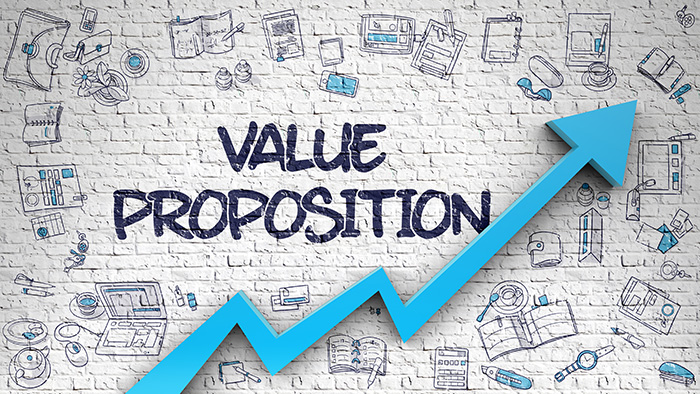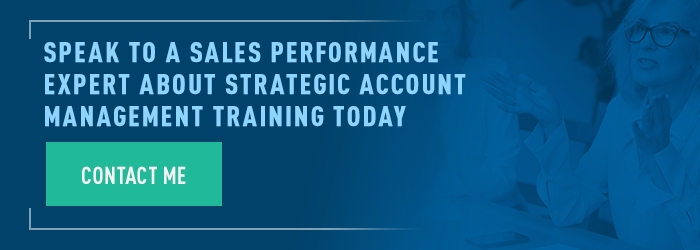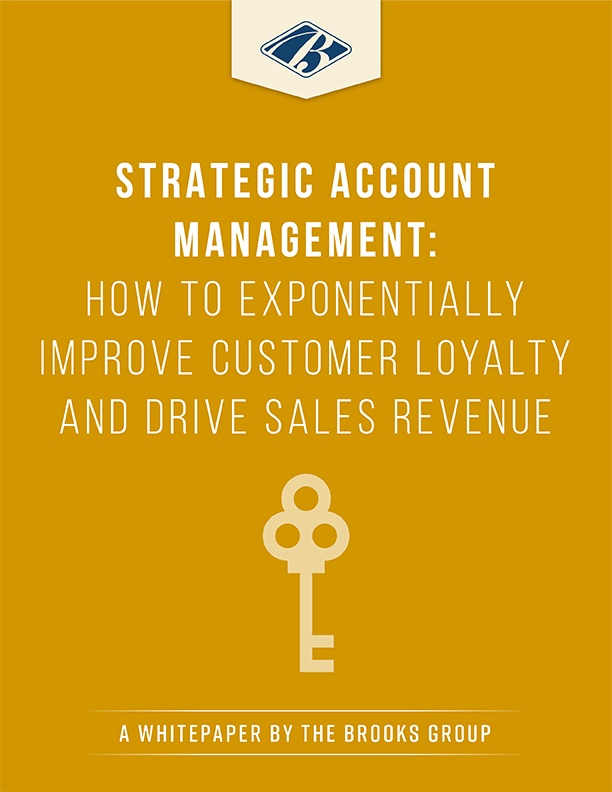There was a time, not long ago, where sales managers extolled the virtues of the “elevator pitch” – a standard value proposition statement that could be delivered, presumably, in the time it took an elevator to traverse the height of a reasonably tall building.
With all due apologies to Otis, Schindler, and other manufacturers of elevators, the day of the elevator pitch is dead. If, when pitching your business to a client, you are only able to state the generic value of your offering to them, you might as well press the button to the basement.
These days, the perception of value means EVERYTHING to your prospects. But we’re not talking specifically about the value your product or service is known for – we mean what it can do for them.
Here at The Brooks Group, we wrote the book on value selling – literally. In fact, our founder, Bill Brooks, wrote in his 2004 book, “Sales Techniques,” that sales professionals who focus on the motivators for the decision, rather than the raw needs, achieve a sale that is 11 percent higher than those who don’t.
So how can you evolve the value of your value proposition within your sales organization?
Here’s an example of how nailing the right value proposition can make all the difference. Let’s say that I am in the market to buy a cell phone. I might consider an iPhone based on all of the buzz I’ve heard in the marketplace – good camera, easy to use, etc. But what is meaningful to me is that the rest of my family, too, has iPhones – so by being a part of their ecosystem, I can personally benefit from communication efficiencies and upgraded features between family members.
In this vein, the ecosystem compatibility is not just a value statement for the entire market of potential iPhone buyers – it’s the primary value statement for me as a unique client.
So how can you best identify the features and benefits that are most important to your prospects? At The Brooks Group, we work with clients who depend on cracking this code as a means of generating revenue. Here are a few tips we have found to be successful:
Learn From Those Who Know: Your salespeople are likely having conversations with dozens of companies in the course of a month. What are customers and prospects struggling with? What is changing their business? This process of advance research is incredibly important, as it enables a more significant, more trusting conversation with any prospect. Prospects like to talk about themselves and their business – so it makes sense for a sales professional to ask how the trends they are seeing with other customers are impacting the prospect. It will prepare them to learn what the real needs of the business are at that moment.
Be Patient: I find that a lot of salespeople will rush in with a value proposition. They’ll say, “Look, I can do this for you. I’ll put a quote in front of you,” and then the deal stalls. The reason for this is two-fold: First, the need you addressed isn’t, in fact, the priority, but too far down the list; and, second, by rushing the quote, you are attempting to do this on your timing, rather than the customers. Take the time to get to know them – be patient – and try to view the interaction as if you were the one being pitched the product. This investment of time need not be substantial. We have clients who go through this process in less than eight minutes on the telephone – though it can last as long as many years for highly complex, multi-million dollar engineered systems. A few minutes spent in learning is much better than weeks spent in a stalled quote, with no clear idea about what will move it forward.
Probe: One secret to setting the right value proposition is to have great discovery conversations with the client from the very start. In our IMPACT Selling training program, this is the “Probe,” or “P” step. Though asking questions upon arrival, rather than delivering your pitch — may seem counterintuitive – consider this is an opportunity to build trust between salesperson and customer, and to ask them directly what they really value. This helps you to avoid doing a “data dump” – just listing off what is great about your product – and instead puts the customer into the mindset that you are really listening to how you or your product can help their specific business. As the conversation continues, don’t be afraid to ask what they like about their current vendors, and what their business goals are. Through this method, you’ll understand what is truly important to them. Make sure you really dig deep — what may seem impressive for some, may not work for others. I worked for a technology company which pitched a value proposition that it could help to cut the number of people in their operations center by 50 percent. One large prospect was very happy to hear this; but upon visiting a very small operation, I was told this was not a good thing – the owner said that I have only one person working in my operations center, and it’s my brother in law – and my wife would be very unhappy with me if I let him go.
Be Specific About the Benefit: It’s one thing to say that your product can optimize your prospect’s workflow, but it’s quite another to help them see, in real dollars and cents, the impact of what you are offering. “I can save you $30,000 a year” is far more impactful than, “I can make your operation more efficient.”
Prioritize: At the conclusion of your discovery conversation, don’t be afraid to ask for immediate feedback – to share what you’ve heard, and make sure that you have an accurate understanding of their needs. You can even ask them to rank, in order, which are the most critical features and benefits. The prospect likely will appreciate the thoughtfulness and detail with which you have approached the conversation.
Can we help you teach your sales professionals the techniques on how to build a winning value proposition? For more than 40 years, The Brooks Group has partnered with sales organizations around the globe—helping them to hire, train, coach, and develop salespeople and sales managers to reach maximum performance levels.
If we can help you set your team up for consistent sales success, let’s start a conversation.
Strategic Account Management – How to Exponentially Improve Customer Loyalty and Drive Sales Revenue
The best way to bring in revenue for your company is to develop long-lasting relationships with your key clients. By giving your team the tools to manage their accounts strategically, you can reduce your sales cycle, improve customer loyalty, and increase overall sales and revenue.






